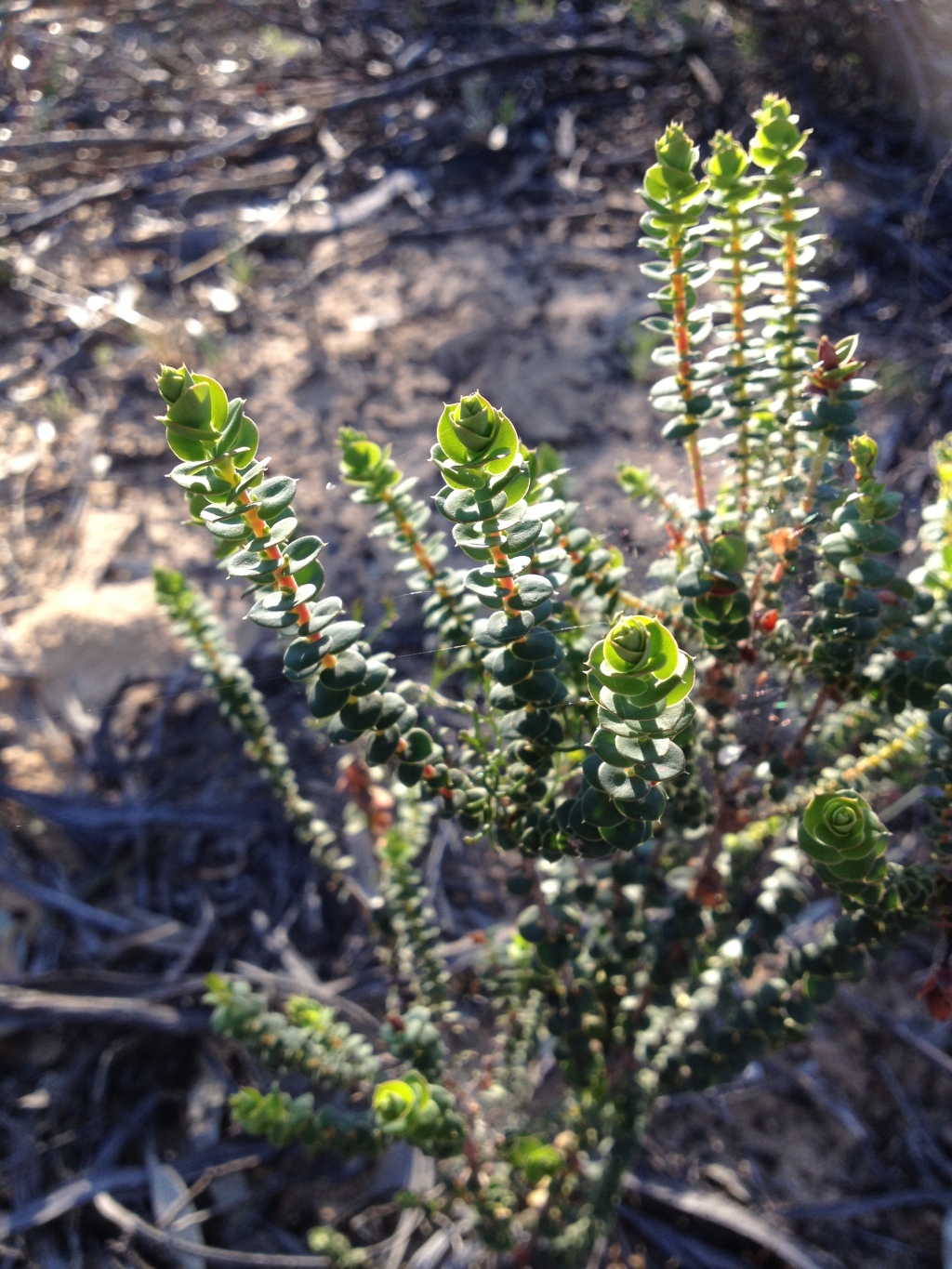Styphelia
Erect, spreading or rarely prostrate shrubs. Leaves sessile or shortly petiolate, often discolorous, lower surface with branching subparallel-palmate veins. Flowers bisexual, axillary, solitary with a bract-like rudiment immediately below the bracteoles, or 2–3 in a much reduced spike terminated by a bract-like rudiment, anthesis occurring on hardened current or previous season's wood; bracts at base of inflorescence several, grading in size to 2 bracteoles immediately subtending sepals; corolla 5-partite, elongate; internal surface of tube hairy at throat and with 5 tufts or a ring of hairs toward base, rarely glabrous; lobes linear to very narrowly triangular, valvate in bud, revolute to recoiled, bearded inside; anthers linear, much exserted from corolla tube; filaments slender, adnate to corolla tube; nectary annular or of distinct scales; ovary 5-locular with 1 ovule per locule, style glabrous, filiform, longer than corolla tube, stigma lobed. Fruit a drupe, with a dry or slightly fleshy mesocarp and a hard endocarp.
A predominantly Australian genus of some 250 species, occurring in all Australian States and territories, New Zealand, New Caledonia and Malesia.
Following studies by e.g Puente-Lelièvre (2015), and Crayn et al. (2020) Styphelia has been reassessed to encompass a number of other genera and some species previously referred to Astroloma and Leucopogon.
Albrecht, D.E. (1996). Epacridaceae. In: Walsh, N.G.; Entwisle, T.J., Flora of Victoria Vol. 3, Dicotyledons Winteraceae to Myrtaceae, pp. 464–509. Inkata Press, Melbourne.
 Spinning
SpinningCrayn, D.M.; Hislop, M.; Puente-Lelievre, C. (2020). A phylogenetic recircumscription of Styphelia (Ericaceae, Epacridoideae, Styphelieae). Austral. Syst. Bot. 33: 137–168.
Puente-Lelièvre, C.; Hislop, M.; Harrington, M.; Brown, E.A.; Kuzmina, M.; Crayn, D.M. (2015). A five-marker molecular phylogeny of the Styphelieae (Epacridoideae, Ericaceae) supports a broad concept of Styphelia. Australian Systematic Botany 28: 368–387.


